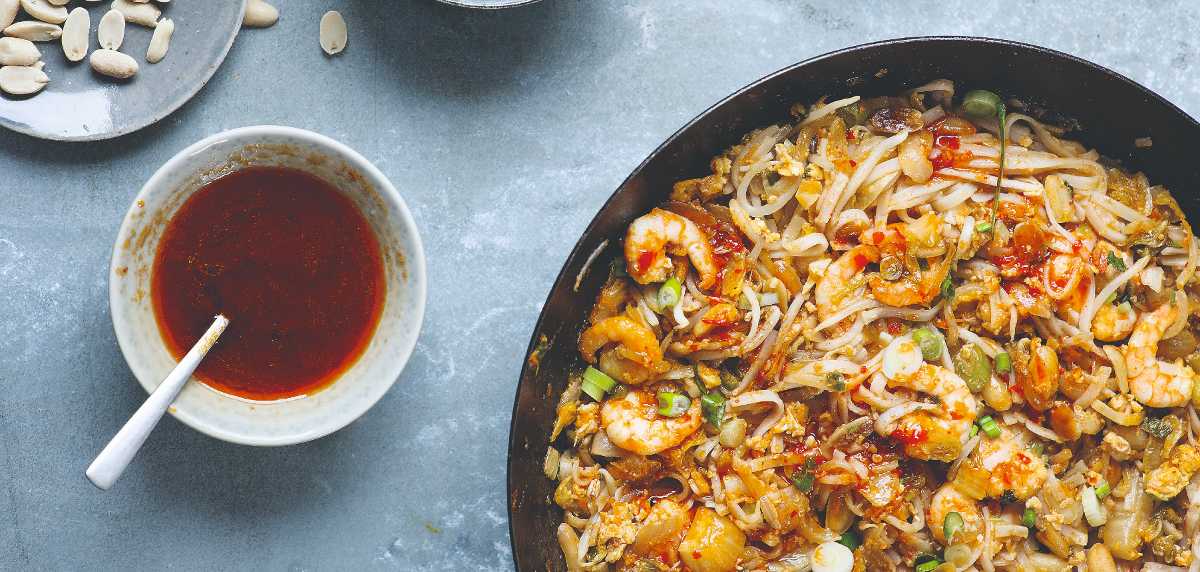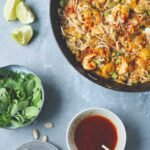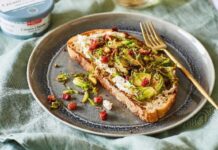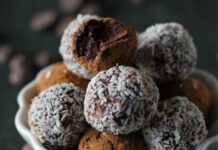“The secret to making the perfect pad thai comes from prepping all the ingredients beforehand and ensuring you balance the hot and sour elements of the dish well,” says Mark Diacono, author of Ferment.
“Why not add a dollop of kimchi to liven the dish up even more?”
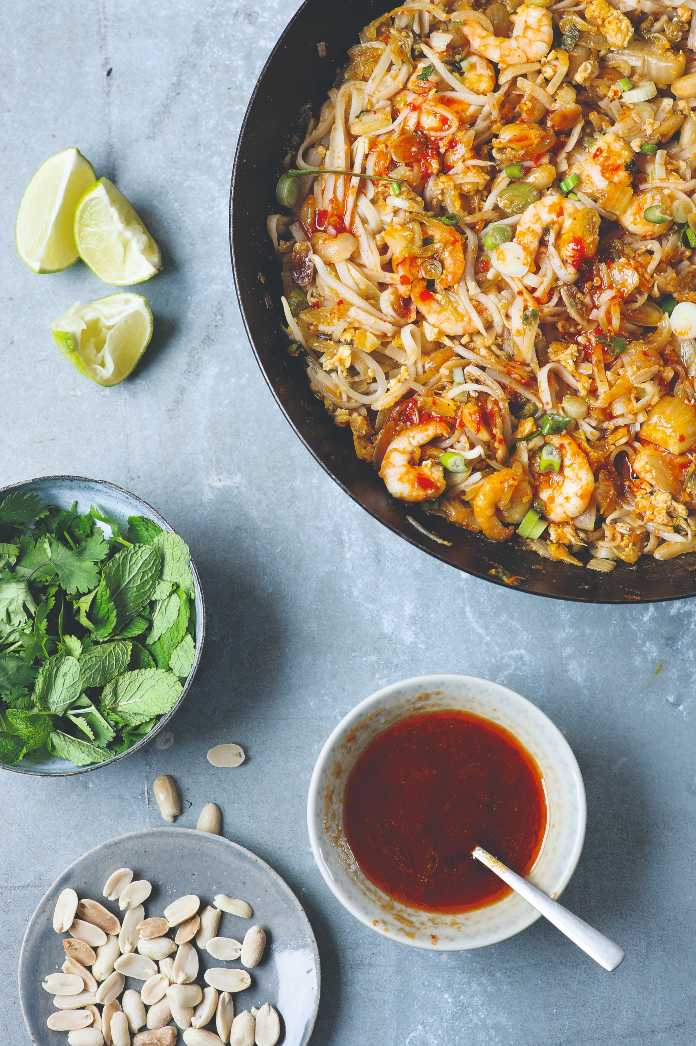
Pad thai
Equipment
- Large bowl
- Jar
- Small pan
- Wok
Ingredients
For the kimchi (fills 1 litre jar):
- 90 g fine sea salt
- 2 Chinese cabbages about 1kg, shredded
- 2 garlic cloves finely chopped
- 5 cm fresh ginger peeled and finely chopped
- 2 tbsp Korean chilli flakes
- 2 tbsp fish sauce
- 2 carrots grated
- 5 spring onions thinly sliced
For the pad thai:
- 200 g flat rice noodles (dried weight), or use 600g ready-cooked flat rice noodles
- 1 tbsp tamarind paste
- 3 tbsp fish sauce
- 1 tsp sugar
- 1-2 tsp chilli flakes or use fresh chilli
- 2 tbsp vegetable oil plus extra for the noodles
- 300 g diced chicken or tofu or prawns
- 1 onion thinly sliced
- 2 garlic cloves finely chopped
- 2 eggs lightly beaten
- 40 g cashews or peanuts roughly chopped
- bunch of spring onions thinly sliced
- 150 g kimchi
- 200 g beansprouts
To serve:
- small bunch of mint leaves roughly chopped
- small bunch of basil leaves roughly chopped
- more fish sauce to taste
- more chilli flakes or chilli sauce to taste
- 1 lime cut into wedges
Method
- For the kimchi: In a large bowl, rub the salt thoroughly through the cabbage, and allow it to soften and form a little brine for an hour or so. In a small cup, make a paste by combining the garlic, ginger, chilli flakes and fish sauce. Using a colander, drain the cabbage so that you retain some of the brine in a bowl. Combine the carrots and spring onions with the cabbage, and stir through the hot fishy sauce. Add a little brine if you need to loosen the mix. Spoon the kimchi into a jar, pressing down well to exclude air bubbles. Use a freezer bag part-filled with water to keep the vegetables submerged and seal the jar. Allow the kimchi to ferment for five days at room temperature. The kimchi should have a pleasingly sour taste. Leave to ferment in the fridge for a few days (or weeks) if you prefer it sourer.
- For the pad thai: If using dried noodles, cook them according to the packet instructions, then drain and toss in a few drops of oil so they don’t glue together.
- Make the sauce by combining the tamarind, fish sauce and sugar in a small pan; bring to the boil to dissolve the sugar. Add the chilli flakes or fresh chilli to taste and put to one side.
- In a large pan, ideally a wok, heat the vegetable oil over a high heat. Add the chicken (or prawns/tofu) and the onion and stir-fry for eight minutes, until coloured and just about cooked through. Add the garlic and beaten egg to the pan for the final two minutes of stir-frying time.
- Add the noodles and stir-fry for a further three minutes, making sure that the chicken is cooked through. Add half the nuts, the spring onions, kimchi and beansprouts and fry for a minute to combine.
- Stir through the sauce and cook for a minute longer before removing from the heat.
- To serve, sprinkle with the remaining nuts and all the herbs. Add a splash more fish sauce/chilli if you fancy and serve with the lime wedges. Add a dash of kimchi.
Nutrition
Ferment by Mark Diacono is published by Quadrille. Photography by Mark Diacono.
No products found.
Best-selling woks
Need a new wok? Check out our list of best-selling woks on Amazon!
No products found.
This article may include affiliate links to products and services where we may receive a small fee to support the running of this site if you make a purchase or is a sponsored article from one of our select editorial partners providing valuable advice and information to our readers.























































